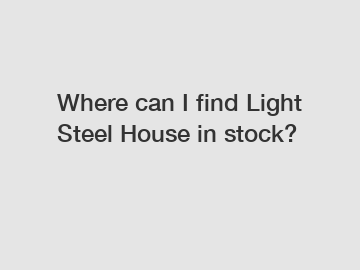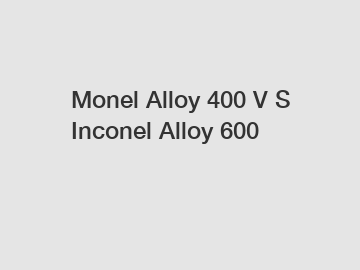Stainless Steel | The Four Types of Steel
Jan. 13, 2025
Stainless Steel | The Four Types of Steel
Stainless Steel | The Four Types Steel (Part 3)
This article is the third in a four-part series on the different types of steel. Read Part 1.
The main alloying element in Stainless steels is chromium (typically between 10-20%). Stainless Steel is valued due to its high corrosion resistance. Stainless steel is about 200 times more resistant to corrosion than mild steel.
Stainless steel can be divided into five groups:
- Austenitic: Austenitic steels form the largest portion of the global stainless steel market and few of its versatile usages would be food processing equipment, kitchen utensils and medical equipment. Austenitic stainless steels are the most weld-able of the stainless grades and can be divided rather loosely into three groups: common chromium-nickel (300 series), manganese-chromium-nickel-nitrogen (200 series) and specialty alloys. These metals are non-magnetic and not heat-treatable.
- Ferritic: Ferritic steels contain trace amounts of nickel, 12-17% chromium, less than 0.1% carbon, along with other alloying elements, such as molybdenum, aluminum or titanium. They can have good ductility and formability, but high-temperature strengths are relatively poor when compared to austenitic grades. Some ferritic stainless grades (such as types 409 and 405) cost less than other stainless steels. These metals are magnetic but are not heat treatable, they can be strengthened by cold working.
- Martensitic: Martensitic steels contain 11-17% chromium, less than 0.4% nickel and up to 1.2% carbon.The carbon content of this harden-able steel affects forming and welding. To obtain useful properties and prevent cracking, preheating and post-weld heat treatment is required. Martensitic stainless steels, such as types 403, 410, 410NiMo and 420 are magnetic and heat-treatable. These Stainless steels are used in knives, cutting tools, as well as dental and surgical equipment.
- Duplex: Primarily used in chemical plants and piping applications. Duplex stainless steels typically contain approximately 22-25% chromium and 5% nickel with molybdenum and nitrogen. Duplexes have higher yield strength and greater stress corrosion cracking resistance to chloride than austenitic stainless steels.
- Precipitation Hardening: This is a chromium-nickel stainless that also contains alloying additions such as aluminum, copper or titanium. These alloys allow the stainless to be hardened by a solution and aging heat treatment. They can be either austenitic or martensitic in the aged condition.
Choosing a particular type of stainless steel can depend on the application and your requirements. Consider things like:
- Environment
- Corrosion and Corrosion resistance
- Tarnish and oxidation resistance
- Pitting
- Crevice corrosion
This article is the third in a four-part series on the different types of steel. Read Part 4 to learn more about Tool Steel grades and its attributes.
Metal Supermarkets
Metal Supermarkets is the world's largest small-quantity metal supplier with 130+ brick-and-mortar stores across the US, Canada, and United Kingdom. We are metal experts and have been providing quality customer service and products since .
At Metal Supermarkets, we supply a wide range of metals for a variety of applications. Our stock includes: mild steel, stainless steel, aluminum, tool steel, alloy steel, brass, bronze and copper.
We stock a wide range of shapes including: bars, tubes, sheets, plates and more. And we can cut metal to your exact specifications.
Visit one of our 130+ locations today.
Additional resources:The Benefits of Using Flat Pack Prefab Container House Customized to Your Needs
How Does Collapsible Container Home Installation Work?
JSW Tinplate Product Specifications | Single Reduced-SR ...
Why is Tin Mill Steel Essential for Sustainability?
Understanding Tin Mill Steel: Benefits and Applications Explained
How can Modular Foldable Housing solutions benefit me?
Transform Your Space with Fold Out Container Residence - Top Exporter Tips!
HWHG are exported all over the world and different industries with quality first. Our belief is to provide our customers with more and better high value-added products. Let's create a better future together.
4 Major Grades of Stainless Steel 321 Sheets
Stainless steel is a popular metal for many applications, from appliances to household items. While it's easy to find stainless steel, choosing the right material for your application is crucial. Here are the few demanded grades for choosing the right stainless steel sheet for your project.
Type 304 Stainless Steel
Stainless Steel 304 Sheet is the most widely used grade of stainless steel. It is also the most affordable. This grade is defined as an austenitic alloy, with a minimum of 18% chromium and 8% nickel. It also contains carbon and sulfur. It has a minimum yield strength of 205 MPa.
It is a versatile material and is well-suited for a wide variety of applications. It is commonly used in food handling equipment, beverage processing, and sanitation. It is also used for dairy equipment, stoves, and tabletop. In addition, it is used in beer brewing and winemaking.
The material can be manufactured into a number of forms, such as plate, coil, or tape. It has good machinability and elongation. It also has good resistance to rust and corrosion. It has excellent hot and cold-forming processes. It is also commonly used for architectural accents and car headers.
Stainless Steel 316
316 stainless steel sheets are a high alloy steel type often used in applications requiring corrosion and oxidation resistance. These sheets are often used in aerospace applications of marine, chemical, medical, food industries, and surgical tools. They are also used in construction and other industrial applications involving harsh environments and corrosive elements. They are highly corrosion-resistance and excellent in tensile strength. They are ideal for acidic chemicals, salt water, and chloride applications. It is due to the presence of molybdenum. The molybdenum increases the corrosion resistance of 316 steel grade. SS 316 sheets are available in a variety of surface finishes. They are also available in custom-cut lengths. They can be purchased in hot-rolled or cold-rolled form.
304L vs Stainless Steel 321
Stainless Steel 321 Sheets & 304L are suitable for a variety of applications. They offer good corrosion resistance and ductility at high temperatures. It can be used for various applications, from pressure vessels to chemical processing equipment. They also have good forming properties and easy to fabricate, and provide good oxidation resistance. They are also cost-effective. Stainless Steel 321 is an austenitic 18/8 stainless steel. It is stabilized with titanium additions. It is also available in a higher-carbon version. The titanium addition improves the high-temperature service life of stainless steel. It also prevents chromium carbide formation. Applications can use 321 stainless steel, which requires resistance to chloride solutions. However, cannot use them in sulfuric acid service. The presence of chloride ions may lead to pitting.
Stainless Steel 430
430 stainless steel is a commonly used material in many industries. Typically, it is used in kitchen appliances, car components, and roofing. Its excellent corrosion and wear resistance make it a good choice for many fields. However, it is important to consider that not all grades perform as well as others. There are many types of stainless steel, and some are better for certain applications than others. For example, 304 stainless steel is better for many applications that require cold resilience. It has high flexibility, but its nickel content makes it more expensive.
Contact us to discuss your requirements of Custom Size Stainless Steel Sheet. Our experienced sales team can help you identify the options that best suit your needs.
Stainless Steel 17-4PH
Are Flat Pack Container Houses the Future?
Container Homes: Pros and Cons of Buying One
Expandable Container Houses: Pros and Cons
The Benefits of Using Pop Up Container Home for Sale: A Comprehensive Guide
Which modular labour housing contractor is best?
How to Choose Modular Foldable Housing Solutions?
Unlock the Future with Fold Out Container Residences - Your Ultimate Space-Saving Solution!
46
0
0




Comments
All Comments (0)